
Deutsch-Chinesische Enzyklopädie, 德汉百科
 苏丹共和国
苏丹共和国
 埃及
埃及
 阿尔及利亚
阿尔及利亚
 安哥拉
安哥拉
 赤道几内亚
赤道几内亚
 埃塞俄比亚
埃塞俄比亚
 博茨瓦纳
博茨瓦纳
 布基纳法索
布基纳法索
 科特迪瓦
科特迪瓦
 厄立特里亚
厄立特里亚
 加纳
加纳
 喀麦隆
喀麦隆
 肯尼亚
肯尼亚
 利比亚
利比亚

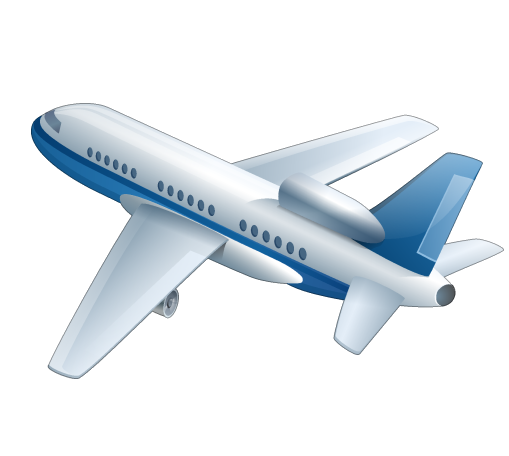

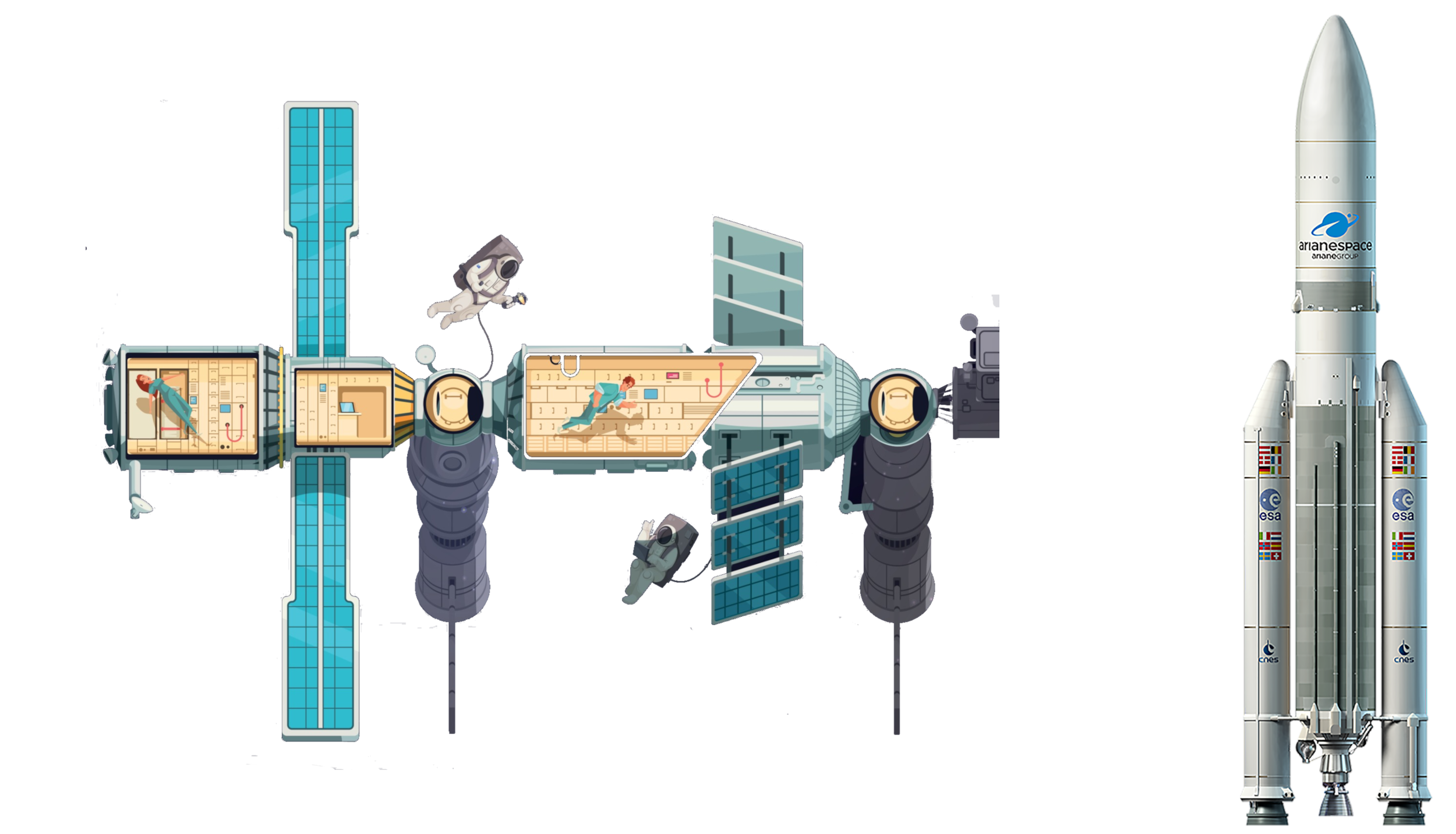 航空航天
航空航天
 马达加斯加
马达加斯加
 马拉维
马拉维
 马里
马里
 摩洛哥
摩洛哥
 毛里求斯
毛里求斯
 莫桑比克
莫桑比克
 纳米比亚
纳米比亚
 刚果共和国
刚果共和国
 苏丹共和国
苏丹共和国
 卢旺达
卢旺达
 塞舌尔
塞舌尔
 津巴布韦
津巴布韦
 南非
南非
 坦桑尼亚
坦桑尼亚
 乍得
乍得
 突尼斯
突尼斯
 非洲联盟
非洲联盟
 阿尔法·孔戴
阿尔法·孔戴
 非洲联盟
非洲联盟
 宾古·瓦·穆塔里卡
宾古·瓦·穆塔里卡
 非洲联盟
非洲联盟
 德尼·萨苏-恩格索
德尼·萨苏-恩格索
 非洲联盟
非洲联盟
 海尔马里亚姆·德萨莱尼
海尔马里亚姆·德萨莱尼
 非洲联盟
非洲联盟
 伊德里斯·代比
伊德里斯·代比
 非洲联盟
非洲联盟
 贾卡亚·基奎特
贾卡亚·基奎特
 非洲联盟
非洲联盟
 若阿金·希萨诺
若阿金·希萨诺
 非洲联盟
非洲联盟
 约翰·阿吉耶库姆·库福尔
约翰·阿吉耶库姆·库福尔
 非洲联盟
非洲联盟
 穆罕默德·乌尔德·阿卜杜勒-阿齐兹
穆罕默德·乌尔德·阿卜杜勒-阿齐兹
 非洲联盟
非洲联盟
 穆阿迈尔·卡扎菲
穆阿迈尔·卡扎菲
 非洲联盟
非洲联盟
 奥卢塞贡·奥巴桑乔
奥卢塞贡·奥巴桑乔
 非洲联盟
非洲联盟
 罗伯特·穆加贝
罗伯特·穆加贝
 非洲联盟
非洲联盟
 特奥多罗·奥比昂·恩圭马·姆巴索戈
特奥多罗·奥比昂·恩圭马·姆巴索戈
 非洲联盟
非洲联盟
 塔博·姆贝基
塔博·姆贝基
 非洲联盟
非洲联盟
 托马斯·博尼·亚伊
托马斯·博尼·亚伊
 非洲联盟
非洲联盟
 保罗·卡加梅
保罗·卡加梅
 非洲联盟
非洲联盟
 阿卜杜勒-法塔赫·塞西
阿卜杜勒-法塔赫·塞西
 非洲联盟
非洲联盟
 穆萨·法基
穆萨·法基
 非洲联盟
非洲联盟
 恩科萨扎娜·德拉米尼-祖马
恩科萨扎娜·德拉米尼-祖马
 非洲联盟
非洲联盟
 让·平
让·平
 非洲联盟
非洲联盟
 阿尔法·奥马尔·科纳雷
阿尔法·奥马尔·科纳雷
 非洲联盟
非洲联盟
 阿马拉·埃西
阿马拉·埃西
 非洲联盟
非洲联盟
 穆罕默德·乌尔德·加祖瓦尼
穆罕默德·乌尔德·加祖瓦尼
 非洲联盟
非洲联盟
 阿扎利·阿苏马尼
阿扎利·阿苏马尼
 非洲联盟
非洲联盟
 费利克斯·齐塞克迪
费利克斯·齐塞克迪
 非洲联盟
非洲联盟
 麦基·萨勒
麦基·萨勒
 埃及
埃及
 阿尔及利亚
阿尔及利亚
 安哥拉
安哥拉
 赤道几内亚
赤道几内亚
 埃塞俄比亚
埃塞俄比亚
 贝宁
贝宁
 博茨瓦纳
博茨瓦纳
 布基纳法索
布基纳法索
 布隆迪
布隆迪
 科特迪瓦
科特迪瓦
 西撒哈拉阿拉伯民主共和国
西撒哈拉阿拉伯民主共和国
 刚果民主共和国
刚果民主共和国
 吉布提
吉布提
 厄立特里亚
厄立特里亚
 加蓬
加蓬
 冈比亚
冈比亚

 地理
地理
 加纳
加纳
 几内亚
几内亚
 几内亚比绍
几内亚比绍
 喀麦隆
喀麦隆
 佛得角
佛得角
 肯尼亚
肯尼亚
 科摩罗
科摩罗
 莱索托
莱索托
 利比里亚
利比里亚
 利比亚
利比亚
 马达加斯加
马达加斯加
 马拉维
马拉维
 马里
马里
 摩洛哥
摩洛哥
 毛里塔尼亚
毛里塔尼亚
 毛里求斯
毛里求斯
 莫桑比克
莫桑比克
 纳米比亚
纳米比亚
 尼日尔
尼日尔
 尼日利亚
尼日利亚

 政党和政府组织
政党和政府组织

 政党和政府组织
政党和政府组织
 二十个主要工业化国家和新兴国家集团
二十个主要工业化国家和新兴国家集团
 刚果共和国
刚果共和国
 苏丹共和国
苏丹共和国
 南苏丹共和国
南苏丹共和国
 卢旺达
卢旺达
 赞比亚
赞比亚
 圣多美和普林西比
圣多美和普林西比
 塞内加尔
塞内加尔
 塞舌尔
塞舌尔
 塞拉利昂
塞拉利昂
 津巴布韦
津巴布韦
 南非
南非
 斯威士兰
斯威士兰
 坦桑尼亚
坦桑尼亚
 多哥
多哥
 乍得
乍得
 突尼斯
突尼斯
 乌干达
乌干达

 重要的国际组织
重要的国际组织

 经济和贸易
经济和贸易
 中非共和国
中非共和国


非洲联盟(法语:Union Africaine; 英语:African Union),简称非盟(UA或AU),是一个包涵了55个非洲国家的联盟,是属于集政治、经济和军事于一体的全非洲性政治实体。非洲联盟于未来有计划统一使用货币、联合防御力量、以及成立跨国家的机关,这包括一个管理非洲联盟的内阁政府。此联盟的主要目的是帮助发展及稳固非洲的民主、人权、以及能永续发展的经济,除此之外亦希望减少非洲内部的武装战乱及创造一个有效的共同市场,最终目标是建立“非洲合众国”。
前身是1963年在埃塞俄比亚首都亚的斯亚贝巴成立的“非洲统一组织”。2002年7月在南非改组。[6]2017年在第28届非盟首脑会议上,摩洛哥获得了54个成员国中的42国同意,时隔33年重新成为该组织成员国,至此非洲联盟已涵盖所有非洲主权国家。[7]
Die Afrikanische Union (arabisch الاتحاد الأفريقي, DMG al-Ittiḥād al-Ifrīqī, englisch African Union, französisch Union africaine, portugiesisch União Africana)[2] ist eine Internationale Organisation, die 2002 die Nachfolge der Organisation für Afrikanische Einheit (OAU) angetreten hat und sich für Kooperation auf allen Gebieten einsetzen soll. Sie ist ein Zusammenschluss von anfangs 53 afrikanischen Staaten (Westsahara ist Mitglied der Afrikanischen Union, sein völkerrechtlicher Status allerdings umstritten).
Der Hauptsitz der Organisation befindet sich im äthiopischen Addis Abeba, das Panafrikanische Parlament im südafrikanischen Midrand. Mitgliedstaaten der AU sind alle international allgemein anerkannten afrikanischen Staaten, einschließlich Westsaharas. Geplant ist in der AU unter anderem ein Afrikanischer Gerichtshof. Marokko wurde am 30. Januar 2017 nach 33 Jahren Abwesenheit wieder in die Afrikanische Staatengemeinschaft aufgenommen.[3]
アフリカ連合(アフリカれんごう)は、アフリカの国家統合体。アフリカ統一機構 (OAU) が、2002年に発展改組して発足した[3]。エチオピアのアディスアベバに本部を置いている。
1963年に創設されたアフリカ統一機構は、モロッコを除くアフリカ大陸の53か国(当時)全てが加入する世界最大の地域統合であったが、「統一機構」という名とは裏腹に各国間の内政不干渉を原則としており、各国で頻発する内戦やクーデターといった危機に対して有効な手段をとることができておらず、機能不全に陥っていた[4]。また、各国間の経済統合なども遅々として進んでいなかった。こうした状況に一石を投じたのが、1991年に締結されたアブジャ条約である。この条約では、アフリカ各国は2028年までに大陸統一通貨「アフロ」を導入し、アフリカ経済共同体(AEC)を創設することが謳われた。これによりアフリカ大陸が経済統合の方向に向かう中、より一層のアフリカ大陸の統合を進めるために新しい機構の創設が求められるようになった。
こうしたなか、アフリカ統一機構により強い権限を持たせ、政治・経済的統合を進めて最終的に欧州連合的な形態にアフリカ大陸を持っていくことを目的として、旧統一機構をアフリカ連合へと改組することを提案したのが、リビアの元首だったムアンマル・アル=カッザーフィーであった。カッザーフィーは1997年以降急速にアラブからアフリカへと外交重心を転換させていたが、1999年9月のスルトにおけるOAU首脳会談においてAUへの移行がリビアによって正式提案された[5]。この提案は各国に受け入れられ、アフリカ統一機構からアフリカ連合への移行のため、2000年7月のロメOAU首脳会議でアフリカ連合制定法(アフリカ連合を創設するための条約)が採択され、各国の批准を待って、2001年に発効した[6]。2002年7月のダーバン首脳会議を経て、アフリカ連合は正式に発足した。
アフリカ連合は、アフリカの一層高度な政治的経済的統合の実現及び紛争の予防解決への取組強化のため発足した地域統合体である。アフリカ諸国と諸国民間の一層の統一性及び連帯性の強化、アフリカの政治的経済的社会的統合の加速化、アフリカの平和と域内紛争や独裁政治の根絶、安全保障及び安定の促進、民主主義原則と国民参加統治の促進、持続可能な開発の促進、教育及び科学等での協力、グローバリゼーション時代におけるアフリカ諸国の国際的な地位向上、等を目指している。また、欧州連合(EU)をモデルとした地域統合を目標に掲げており、将来的には統一した国家へ発展させ、アフリカ合衆国を創ることも視野に入れている。
2001年にはアフリカ開発のための新パートナーシップ(NEPAD)を採択し、アフリカ大陸の開発のための指針を表明した。また、これに基づいて、各国が加盟国のガバナンスなどの状況を審査するアフリカン・ピア・レビュー・メカニズム(アフリカにおける相互審査システム、APRM)が創設され、2005年にはガーナの、2006年にはルワンダの報告書が作成された[7]。
The African Union (AU) is a continental union consisting of 55 member states located on the continent of Africa, with exception of various territories of European possessions located in Africa. The bloc was founded on 26 May 2001 in Addis Ababa, Ethiopia and launched on 9 July 2002 in South Africa.[6] The intention of the AU is to replace the Organisation of African Unity (OAU), established on 25 May 1963 in Addis Ababa by 32 signatory governments. The most important decisions of the AU are made by the Assembly of the African Union, a semi-annual meeting of the heads of state and government of its member states. The AU's secretariat, the African Union Commission, is based in Addis Ababa.
In result of its geographical location, the African Union has an area of around 29 million km2 (11 million sq mi) and includes popular world landmarks, including the Sahara and the Nile.[7] They have adopted a gold, green and red based emblem and flag to represent the continental union, where they held a competition for citizens to design a flag in which they chose a submission to replace the old flag. Their main celebration occurs on Africa Day on 25 May. The primary languages spoken include Arabic, English, French and Portuguese and the languages of Africa. Within the African Union, there are official bodies such as the Peace and Security Council and the Pan-African Parliament.
L'Union africaine (UA) est une organisation d'États africains créée en 2002, à Durban en Afrique du Sud, en application de la déclaration de Syrte du 9 septembre 1999. Elle a remplacé l'Organisation de l'unité africaine2 (OUA). La mise en place de ses institutions (Commission, Parlement panafricain et Conseil de paix et de sécurité) a eu lieu en juillet 2003 au sommet de Maputo au Mozambique.
Son premier président a été le Sud-Africain Thabo Mbeki, précédemment président de l'OUA.
Ses buts sont d'œuvrer à la promotion de la démocratie, des droits de l'Homme et du développement à travers l'Afrique, surtout par l'augmentation des investissements extérieurs par l'intermédiaire du programme du Nouveau partenariat pour le développement de l'Afrique (NEPAD). Ce programme considère que la paix et la démocratie sont des préalables indispensables au développement durable.
L'Unione africana (UA) è un'organizzazione internazionale comprendente tutti gli Stati africani, con sede ad Addis Abeba, in Etiopia. Les objectifs de l'UA comportent la création d'une banque centrale de développement.
Si tratta di un'organizzazione internazionale molto giovane, nata ufficialmente con il primo vertice dei capi di Stato e di governo del 9 luglio 2002 a Durban, in Sudafrica, durante il quale ne assunse la presidenza Thabo Mbeki, presidente sudafricano. Nel corso del vertice, al quale presenziava tra gli altri il segretario generale delle Nazioni Unite Kofi Annan, furono sottoscritti i primi atti riguardanti gli organi dell'Unione, ovvero il protocollo relativo allo stabilimento del Consiglio di pace e sicurezza e lo statuto della commissione, e furono stabilite regole e procedure per l'Assemblea, il consiglio esecutivo e il comitato dei rappresentanti permanenti.
Le fasi del processo di sviluppo precedenti al vertice di Durban avvennero all'interno dell'Organizzazione dell'unità africana. Nella sessione straordinaria del 1999 a Sirte, in Libia, (luogo di nascita del Leader libico Mu'ammar Gheddafi promotore dell'organizzazione, anche con cospicui capitali) l'Organizzazione decise la nascita della nuova Unione.
Il Sahara Occidentale è ammesso come Repubblica democratica araba Sahrawi, pur non essendo a tutti gli effetti indipendente trattandosi di un territorio conteso con il Marocco.
Nel 2000 fu adottato l'atto costitutivo, che entrò in vigore il 26 maggio 2001, un mese esatto dopo la sottoscrizione della Nigeria, il trentaseiesimo Stato ad averlo ratificato. Come previsto dall'atto per un anno vi fu coesistenza tra le due organizzazioni.
Il 15 agosto 2002 le è stato riconosciuto lo status di osservatore dell'Assemblea generale delle Nazioni Unite.
La Unión Africana (por su acrónimo UA, o AU en inglés u otras de sus lenguas oficiales) es una unión política formada por 55 Estados africanos. La UA se creó el 26 de mayo de 2001 en Adís Abeba y comenzó a funcionar el 9 de julio de 2002 en Durban (Sudáfrica),2 reemplazando a la Organización para la Unidad Africana (OUA). Las decisiones más importantes de la UA son tomadas por la Asamblea de la Unión Africana, una reunión semestral de jefes de Estado y de gobierno de sus Estados miembros. El secretariado de la UA, la Comisión de la Unión Africana, tiene su sede en Adís Abeba, capital de Etiopía.
Африка́нский сою́з (сокращённо АС, АфроСоюз) — международная межправительственная организация, объединяющая 55 государств Африки, правопреемник Организации африканского единства (ОАЕ). Основана 9 июля 2002 года[4]. Важнейшие решения в рамках организации принимаются на Ассамблее Африканского союза — собрании глав государств и правительств государств — членов организации, которое проводится раз в полгода. Секретариат Африканского союза и Комиссия Африканского союза расположены в Аддис-Абебе, столице Эфиопии. В феврале 2009 года было принято решение о преобразовании Комиссии Африканского союза в Полномочный орган Африканского союза (англ. African Union Authority)[5].
 埃及
埃及
 阿尔及利亚
阿尔及利亚
 埃塞俄比亚
埃塞俄比亚
 贝宁
贝宁
 布基纳法索
布基纳法索
 吉布提
吉布提
 厄立特里亚
厄立特里亚
 冈比亚
冈比亚
 加纳
加纳
 喀麦隆
喀麦隆
 佛得角
佛得角

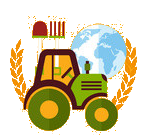 农业、林业、畜牧业、渔业
农业、林业、畜牧业、渔业
 利比亚
利比亚
 马里
马里
 毛里塔尼亚
毛里塔尼亚
 尼日尔
尼日尔
 尼日利亚
尼日利亚
 苏丹共和国
苏丹共和国
 塞内加尔
塞内加尔
 索马里
索马里
 乍得
乍得
 突尼斯
突尼斯
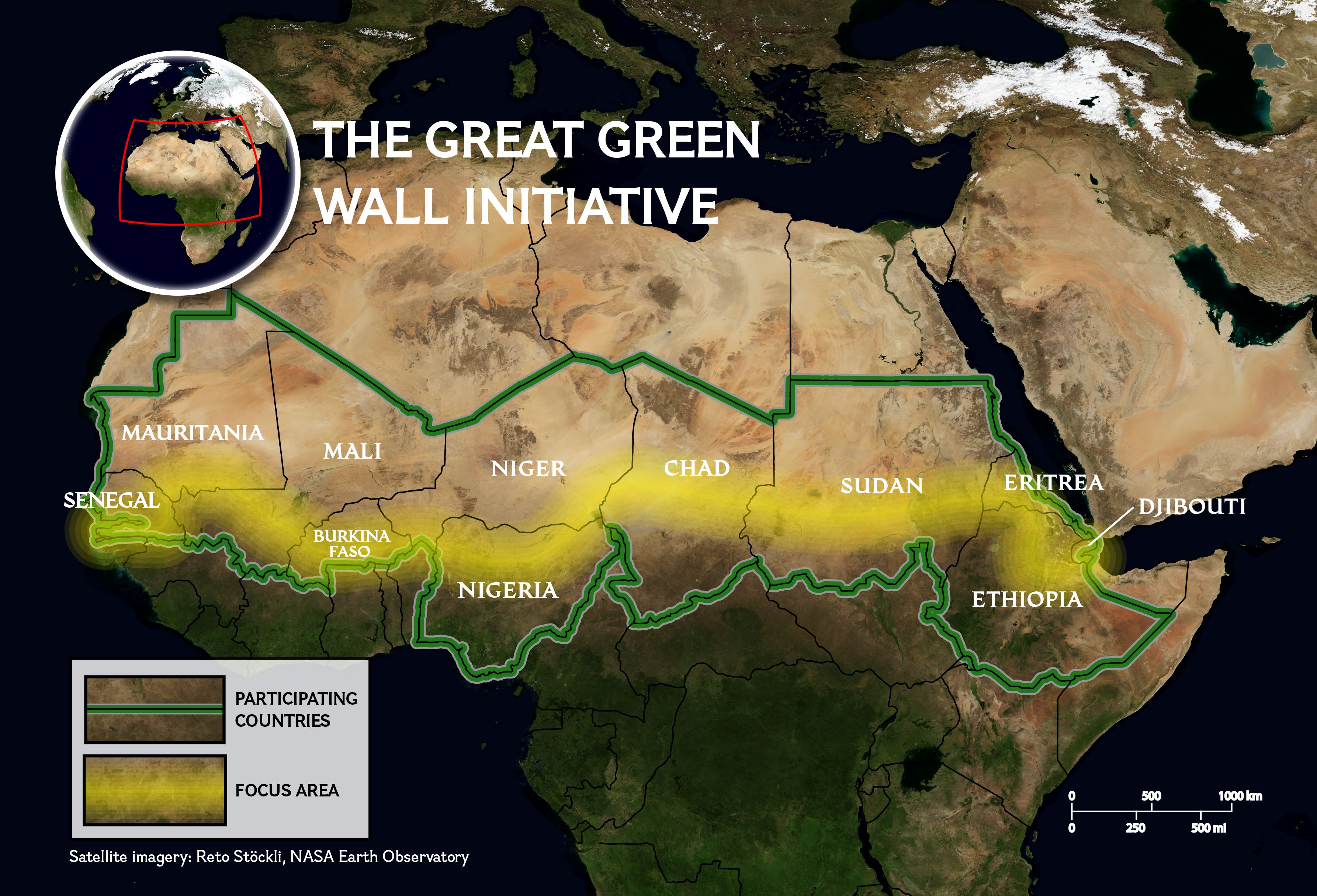
非洲绿色长城(英语:Great Green Wall)为沿着撒哈拉沙漠南缘的萨赫尔地区种植跨越非洲大陆的树墙,是一项防止沙漠化的计划。这项计划由非洲联盟主导,概念起自于绿色前线、中国的三北防护林等大型绿色工程计划,以解决撒赫尔和撒哈拉地区在土地退化和沙漠化后所导致的社会、经济、环境的不利影响。
Afrikas Grüne Mauer (englisch Great Green Wall) oder auch Initiative Große Grüne Mauer der Sahara und des Sahel (kurz GGWSSI; englisch Great Green Wall of the Sahara and the Sahel Initiative) genannt, ist Afrikas Vorzeigeinitiative, um die Effekte des Klimawandels und der Desertifikation zu bekämpfen. Die Initiative wird von der Afrikanischen Union geführt. Das Ziel ist die Erschaffung eines großen Mosaiks aus grüner und produktiver Landschaft, das sich über Nordafrika, die Sahelzone und das Horn von Afrika erstreckt. Mittel dazu sind u. a. Aufforstungsprojekte und die Wiederherstellung degradierter Böden. Grund ist die Verhinderung weiterer Desertifikation in der Sahelzone.
 埃及
埃及
 阿尔及利亚
阿尔及利亚
 阿拉伯国家联盟
阿拉伯国家联盟
 阿拉伯国家联盟
阿拉伯国家联盟
 阿卜杜勒·拉赫曼·哈桑·阿扎姆
阿卜杜勒·拉赫曼·哈桑·阿扎姆
 阿拉伯国家联盟
阿拉伯国家联盟
 阿卜杜勒·哈立克·哈苏纳
阿卜杜勒·哈立克·哈苏纳
 阿拉伯国家联盟
阿拉伯国家联盟
 艾哈迈德·阿布·盖特
艾哈迈德·阿布·盖特
 阿拉伯国家联盟
阿拉伯国家联盟
 艾哈迈德·阿斯马特·阿卜杜勒-马吉德
艾哈迈德·阿斯马特·阿卜杜勒-马吉德
 阿拉伯国家联盟
阿拉伯国家联盟
 阿穆尔·穆萨
阿穆尔·穆萨
 阿拉伯国家联盟
阿拉伯国家联盟
 切德利·克里比
切德利·克里比
 阿拉伯国家联盟
阿拉伯国家联盟
 马哈茂德·里亚德
马哈茂德·里亚德
 阿拉伯国家联盟
阿拉伯国家联盟
 纳比勒·阿拉比
纳比勒·阿拉比
 阿拉伯国家联盟
阿拉伯国家联盟
 纳比勒·阿拉比
纳比勒·阿拉比
 巴林
巴林
 吉布提
吉布提

 手拉手
手拉手
 伊拉克
伊拉克
 也门
也门
 约旦
约旦
 卡塔尔
卡塔尔
 科摩罗
科摩罗
 科威特
科威特
 黎巴嫩
黎巴嫩
 利比亚
利比亚
 摩洛哥
摩洛哥
 毛里塔尼亚
毛里塔尼亚
 阿曼
阿曼
 巴勒斯坦
巴勒斯坦
 苏丹共和国
苏丹共和国
 沙特阿拉伯
沙特阿拉伯
 索马里
索马里
 叙利亚
叙利亚
 突尼斯
突尼斯
 阿拉伯联合酋长国
阿拉伯联合酋长国

 重要的国际组织
重要的国际组织

 埃及
埃及
 阿尔及利亚
阿尔及利亚
 埃塞俄比亚
埃塞俄比亚
 巴林
巴林

 教育和研究
教育和研究
 吉布提
吉布提
 厄立特里亚
厄立特里亚
 冈比亚
冈比亚

 手拉手
手拉手

 手拉手
手拉手
 文化和语言学院
文化和语言学院
 伊拉克
伊拉克
 伊朗
伊朗
 以色列
以色列
 也门
也门
 约旦
约旦
 卡塔尔
卡塔尔
 科摩罗
科摩罗
 科威特
科威特
 黎巴嫩
黎巴嫩
 利比亚
利比亚

 文学
文学
 摩洛哥
摩洛哥
 毛里塔尼亚
毛里塔尼亚
 尼日尔
尼日尔
 尼日利亚
尼日利亚
 阿曼
阿曼
 巴勒斯坦
巴勒斯坦
 苏丹共和国
苏丹共和国
 南苏丹共和国
南苏丹共和国
 沙特阿拉伯
沙特阿拉伯
 塞内加尔
塞内加尔
 索马里
索马里
 叙利亚
叙利亚
 坦桑尼亚
坦桑尼亚
 乍得
乍得
 突尼斯
突尼斯
 土耳其
土耳其
 阿拉伯联合酋长国
阿拉伯联合酋长国

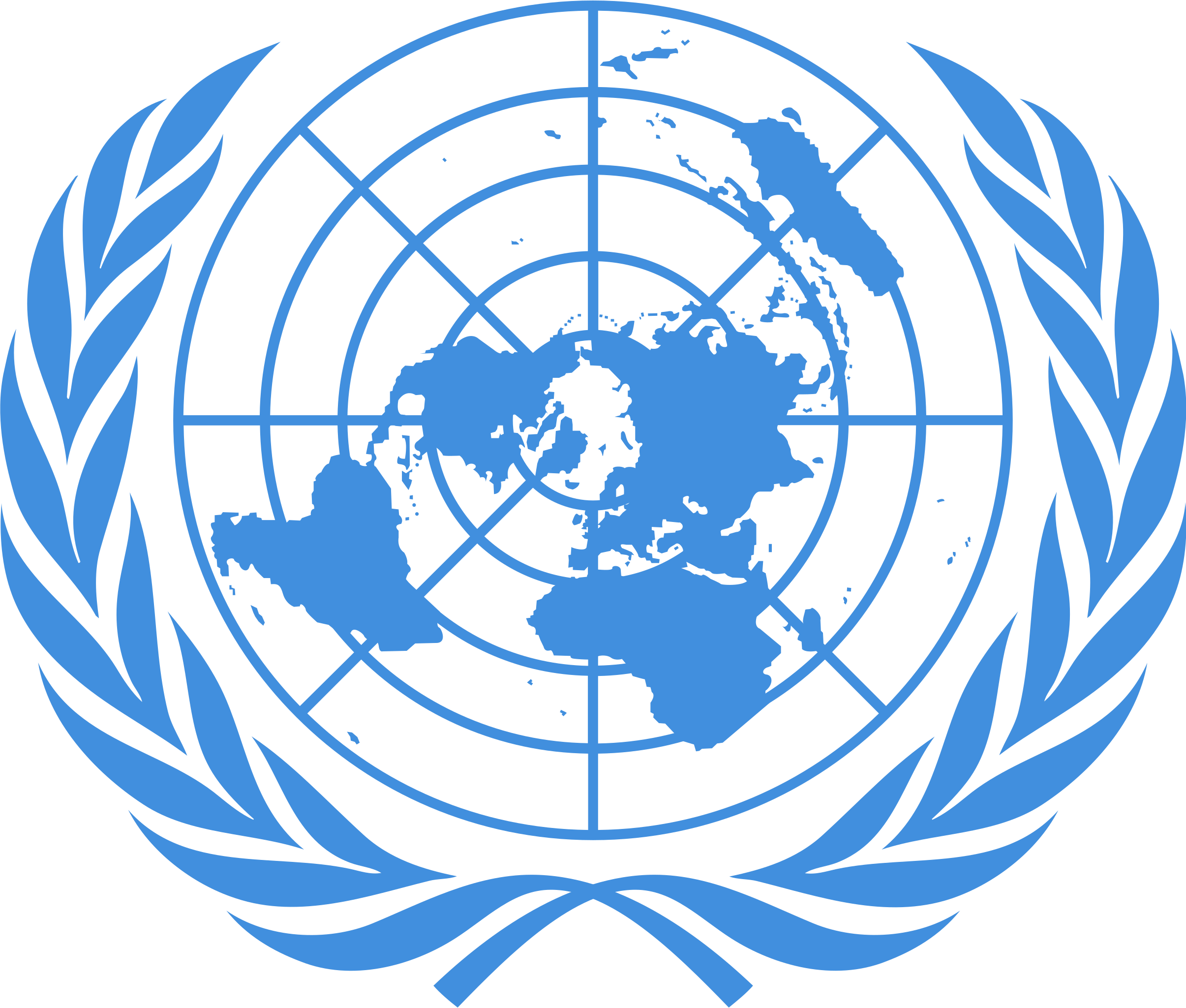 联合国
联合国
 官方语言
官方语言
 塞浦路斯
塞浦路斯
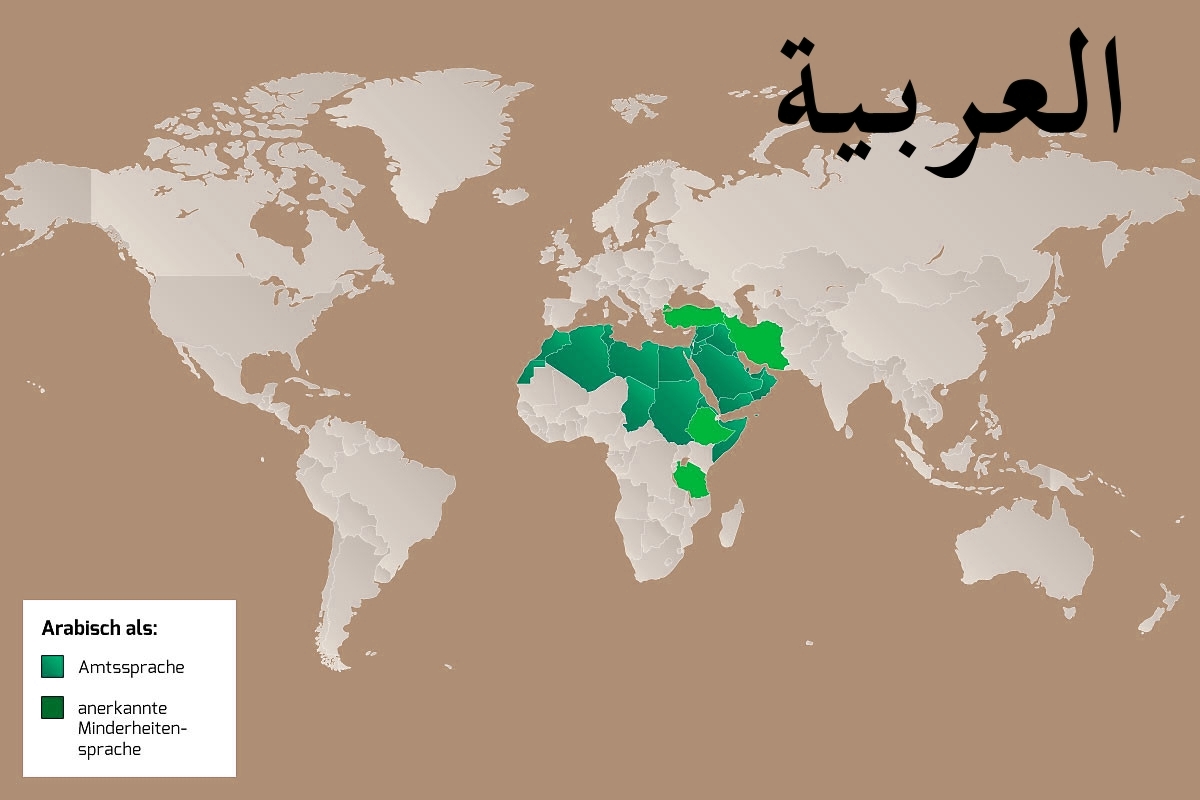
Die arabische Sprache (kurz Arabisch; Eigenbezeichnung اَللُّغَةُ اَلْعَرَبِيَّة, DMG al-luġatu l-ʿarabiyya ‚die arabische Sprache‘, kurz العربية, DMG al-ʿarabiyya ‚das Arabische‘, Ausspracheⓘ/?) ist die am weitesten verbreitete Sprache des semitischen Zweigs der afroasiatischen Sprachfamilie und in ihrer Hochsprachform الفصحى / al-Fuṣḥā eine der sechs Amtssprachen der Vereinten Nationen. Schätzungsweise wird Arabisch von 313 Millionen Menschen als Muttersprache und von weiteren 424 Millionen als Zweit- oder Fremdsprache gesprochen.[2][3] Auch durch seine Rolle als Sakralsprache entwickelte sich das Arabische zur Weltsprache.[4] Die moderne arabische Standardsprache beruht auf dem klassischen Arabischen, der Sprache des Korans und der Dichtung, und unterscheidet sich stark von den gesprochenen Varianten des Arabischen.
Aus dem klassischen Arabisch hat sich in den letzten anderthalb Jahrtausenden eine Vielzahl von Dialekten entwickelt. Für alle Sprecher dieser Sprache, außer den Sprechern des Maltesischen, ist Hocharabisch Schrift- und Dachsprache. Das Maltesische ist mit den maghrebinisch-arabischen Dialekten stark verwandt, wurde jedoch im Gegensatz zu den anderen gesprochenen Formen des Arabischen zu einer eigenständigen Standardsprache ausgebaut. Ob Hocharabisch als moderne Standardsprache zu betrachten ist, ist umstritten (siehe auch Ausbausprache). Es fehlt oft an einem einheitlichen Wortschatz für viele Begriffe der modernen Welt sowie am Fachwortschatz in vielen Bereichen moderner Wissenschaften. Darüber hinaus ist Hocharabisch innerhalb der einzelnen arabischen Länder relativ selten ein Mittel zur mündlichen Kommunikation.
Die einzelnen arabischen Dialekte in den verschiedenen Ländern unterscheiden sich teilweise sehr stark voneinander, wenn auch meist nur in der Aussprache, und sind bei vorliegender geographischer Distanz gegenseitig nicht oder nur schwer verständlich. So werden beispielsweise algerische Filme, die im dortigen Dialekt gedreht worden sind, zum Teil hocharabisch untertitelt, wenn sie in den Golfstaaten ausgestrahlt werden.
阿拉伯语(اَلْعَرَبِيَّةُ,al-ʿarabiyyah [al ʕaraˈbijːa] (ⓘ)或者 عربي/عربى,ʿarabīy [ˈʕarabiː] (ⓘ)或 [ʕaraˈbij]),书写形式也称阿拉伯文,是除了英语和法语之外最多国家使用的官方语言。阿拉伯语源自公元6世纪的古典阿拉伯语。它包括书面语及流通于中东、北非和非洲之角(即索马里半岛)的各种口语。阿拉伯语属于亚非语系。
 埃及
埃及
 埃及
埃及
 埃及
埃及
 埃及
埃及
 埃及
埃及
 埃及
埃及
 埃及
埃及
 阿尔及利亚
阿尔及利亚
 埃塞俄比亚
埃塞俄比亚
 科特迪瓦
科特迪瓦
 科特迪瓦
科特迪瓦
 刚果民主共和国
刚果民主共和国
 刚果民主共和国
刚果民主共和国
 加纳
加纳
 加纳
加纳
 加纳
加纳
 加纳
加纳
 喀麦隆
喀麦隆
 喀麦隆
喀麦隆
 喀麦隆
喀麦隆
 喀麦隆
喀麦隆
 喀麦隆
喀麦隆
 摩洛哥
摩洛哥
 尼日利亚
尼日利亚
 尼日利亚
尼日利亚
 尼日利亚
尼日利亚
 刚果共和国
刚果共和国
 苏丹共和国
苏丹共和国
 赞比亚
赞比亚
 南非
南非
 突尼斯
突尼斯
 埃及
埃及
 阿尔及利亚
阿尔及利亚
 巴林
巴林
 吉布提
吉布提
 伊拉克
伊拉克
 也门
也门
 约旦
约旦
 卡塔尔
卡塔尔
 科摩罗
科摩罗
 科威特
科威特
 黎巴嫩
黎巴嫩
 利比亚
利比亚
 摩洛哥
摩洛哥
 毛里塔尼亚
毛里塔尼亚
 阿曼
阿曼
 巴勒斯坦
巴勒斯坦
 苏丹共和国
苏丹共和国
 沙特阿拉伯
沙特阿拉伯
 索马里
索马里
 叙利亚
叙利亚
 突尼斯
突尼斯
 阿拉伯联合酋长国
阿拉伯联合酋长国

 重要的国际组织
重要的国际组织

尼罗河(英语:Nile,阿拉伯语:النيل,埃及语:Ḥ'pī / iteru,科普特语:ⲫⲓⲁⲣⲟ / phiaro)是一条流经非洲东部与北部的河流,与中非地区的刚果河以及西非地区的尼日尔河并列非洲最大的四个河流系统。尼罗河长6650千米,是世界上第一长的河流[2]。2007年虽有来自巴西的学者宣称亚马逊河长度更胜一筹,但尚未获全球地理学界的普遍认同[3]。尼罗河有两条主要的支流,白尼罗河和蓝尼罗河。发源于埃塞俄比亚高原的青尼罗河是尼罗河下游大多数水和营养来源,但白尼罗河则是两条支流中最长的。它源于非洲中部的大湖地区,其最远的源头位于卢旺达( 2°16′55.92″S 29°19′52.32″E / 2.2822000°S 29.3312000°E),向北它流经坦桑尼亚并注入维多利亚湖,再从此湖中溢出注入艾伯特湖,往北流入乌干达和苏丹共和国南部,并于后者处形成大面积沼泽湿地。蓝尼罗河源于埃塞俄比亚的塔纳湖(
2°16′55.92″S 29°19′52.32″E / 2.2822000°S 29.3312000°E),向北它流经坦桑尼亚并注入维多利亚湖,再从此湖中溢出注入艾伯特湖,往北流入乌干达和苏丹共和国南部,并于后者处形成大面积沼泽湿地。蓝尼罗河源于埃塞俄比亚的塔纳湖( 12°2′8.8″N 37°15′53.11″E / 12.035778°N 37.2647528°E),从东南流入苏丹。在苏丹首都喀土穆附近,白尼罗河蓝尼罗河相汇,形成尼罗河。
12°2′8.8″N 37°15′53.11″E / 12.035778°N 37.2647528°E),从东南流入苏丹。在苏丹首都喀土穆附近,白尼罗河蓝尼罗河相汇,形成尼罗河。
尼罗河从苏丹首都向北穿过苏丹和埃及,所经过的地方均是沙漠。从古代开始埃及的文明就依靠尼罗河而形成和兴旺。除海港和海岸附近的城市外埃及所有的城市和大多数居民住在阿斯旺以北的尼罗河畔,几乎所有的古埃及遗址均位于尼罗河畔。 在其入海口尼罗河形成一个巨大的三角洲,在这里它注入地中海。
一般にはヴィクトリア湖を源流だとする約5,760kmの大河だと思われているが、ヴィクトリア湖には多数の流入河川が存在し、一方でヴィクトリア湖からの流出河川はナイル川しか存在しないため、ヴィクトリア湖をナイル川水系に含み、そこに流れ込む河川の長さもナイル川の長さに加算するのが普通である。ヴィクトリア湖に流れ込む河川のうちで最大最長のものは、ルワンダに源を持ち、ルワンダとブルンジやタンザニアの国境をなし、さらにタンザニアとウガンダの国境をなした後タンザニアのブコバ市北方でヴィクトリア湖に流れ込むカゲラ川である。そのカゲラ川の支流のうちでもっとも長いものは、ブルンジ南部のブルリ県を水源とするルヴィロンザ川(Ruvyironza)であり、これがナイル川の最上流であるとされる。
ヴィクトリア湖(標高1134m)は赤道直下のサバナ気候であり、降水量も多い。ヴィクトリア湖から下流はヴィクトリアナイルとも呼ばれその長さは約5,760kmである。ヴィクトリア湖からのナイル川の流出口は湖北部のジンジャであり、流出口には記念碑が建てられているほか、オーエン・フォールズ・ダムが建設され、発電をおこなっている。ヴィクトリア湖から約500km下流に行くとキオガ湖を経て、120mの高さのあるマーチソン・フォールズをとおり、アルバート湖(標高619m)に着く[1]。アルバート湖には、ほかにもウガンダ南西部のジョージ湖からカジンガ水路、エドワード湖を通って流れてきたセムリキ川が注いでいる。アルバート湖からはアルバートナイルとも呼ばれる。南スーダンに入り、急流を一つ越えると首都ジュバである。ジュバからは勾配が非常に緩やかとなり、少し北のモンガラ市周辺からはスッドの影響を受けるようになる。支流のバハル・エル=ガザル川(Bahr el Ghazal)とノ湖で合流し、そこからは白ナイル川とよばれる。このあたりはスッドと呼ばれる大湿原となっており、ここで蒸発して流量が激減する。帆船時代はここは複雑な流路と生い茂る水草によって南北の交通を阻む障壁となってきたが、蒸気船の登場以後は航路が設定されるようになった。さらに、スッドの出口であるマラカル市の南でソバト川を合わせる。マラカルからハルツームまでの800kmの標高差は12mにすぎず、非常に緩やかな流れとなる[2]。
白ナイル川はスーダンのハルツームで、エチオピアのタナ湖から流れてくる青ナイル川と合流する。ハルツームを過ぎて80kmほどで、ナイル川には再び急流が出現する。これは北から数えて6番目の急流のため、第6急流と呼ばれる。ここからエジプトのアスワンまでの間にある6つの急流は、エジプトとスーダンの間の舟運を拒み、交通の障害となってきた。しかし、この急流の区間は古くからエジプトの影響を受け、ヌビアと呼ばれて独自の古代王国を築いていた。第6急流の北、200kmほどのところには古代のクシュ王国の都であったメロエ(Meroë)がある。さらにその北、ハルツームから約300km下流のアトバラで支流のアトバラ川と合流する。これ以北は完全な砂漠気候であり、ナイル河谷を除いてほとんど人は住まなくなる。また、これ以北ではナイルに注ぎ込む常時水流のある支流は存在せず、わずかに降水時に水の流れるワジが点在するのみとなる。第4急流付近には、メロエ以前にクシュの首都であったナパタ(ゲベル・バルカル)がある。この付近に2009年メロウェダム(Merowe Dam)が完成し、大規模な発電を開始した。エジプトに入ると、アスワン・ハイ・ダムとそれによって出来たナセル湖がある。ナセル湖の長さは550kmに及び、その南端はスーダン最北の町ワジハルファを越えさらに南まで延びている。アスワン以北は古くからの「エジプト」であり、幅5kmほどのナイル河谷に人が集住するようになる。アスワンからカイロまでは上エジプトと呼ばれる。この区間ではナイル川はほぼ一本の河川であるが、北西へと流れる支流があり、カイロ南西にファイユーム・オアシスを作ってカルーン湖に注ぎ込む。それからさらに北へ流れ、カイロから北は三角州が発達している。ナイル川三角州は下エジプトとも呼ばれる。三角州はアレクサンドリアからポートサイドまで約240kmの幅を持ち、東のロゼッタ支流と西のダミエッタ支流という二つの主流と多くの分流に別れ、地中海に注いでいる。
The Nile (Arabic: النيل, romanized: an-Nīl, Arabic pronunciation: [an'niːl], Bohairic Coptic: ⲫⲓⲁⲣⲟ Pronounced [pʰjaˈro][4], Nobiin: Áman Dawū[5]) is a major north-flowing river in northeastern Africa, and is the longest river in Africa and the disputed longest river in the world,[6][7] as the Brazilian government says that the Amazon River is longer than the Nile.[8][9] The Nile is about 6,650 km (4,130 mi)[n 1] long and its drainage basin covers eleven countries: Tanzania, Uganda, Rwanda, Burundi, the Democratic Republic of the Congo, Kenya, Ethiopia, Eritrea, South Sudan, Republic of the Sudan, and Egypt.[11] In particular, the Nile is the primary water source of Egypt and Sudan.[12]
The Nile has two major tributaries – the White Nile and the Blue Nile. The White Nile is considered to be the headwaters and primary stream of the Nile itself. The Blue Nile, however, is the source of most of the water, containing 80% of the water and silt. The White Nile is longer and rises in the Great Lakes region of central Africa, with the most distant source still undetermined but located in either Rwanda or Burundi. It flows north through Tanzania, Lake Victoria, Uganda and South Sudan. The Blue Nile begins at Lake Tana in Ethiopia[13] and flows into Sudan from the southeast. The two rivers meet just north of the Sudanese capital of Khartoum.[14]
The northern section of the river flows north almost entirely through the Sudanese desert to Egypt, then ends in a large delta and flows into the Mediterranean Sea. Egyptian civilization and Sudanese kingdoms have depended on the river since ancient times. Most of the population and cities of Egypt lie along those parts of the Nile valley north of Aswan, and nearly all the cultural and historical sites of Ancient Egypt are found along river banks.
Le Nil (prononcé [nil]) est un fleuve d'Afrique. Avec une longueur d'environ 6 700 km, c'est avec le fleuve Amazone, le plus long fleuve du mondenotes 1. Il est issu de la rencontre du Nil Blanc et du Nil Bleu. Le Nil blanc (Nahr-el-Abiad) prend sa source au lac Victoria (Ouganda, Kenya, Tanzanie) ; le Nil bleu (Nahr-el-Azrak) est issu du lac Tana (Éthiopie). Ses deux branches s'unissant à Khartoum, capitale du Soudan actuel, le Nil se jette dans la Méditerranée en formant un delta au nord de l'Égypte. En comptant ses deux branches, le Nil traverse le Rwanda, le Burundi, la Tanzanie, l'Ouganda, l'Éthiopie, le Soudan du Sud, le Soudan et l'Égypte. Il longe également le Kenya et la République démocratique du Congo (respectivement avec les lacs Victoria et Albert), et son bassin versant concerne aussi l'Érythrée grâce à son affluent du Tekezé.
Le Nil est la voie qu'empruntaient les Égyptiens pour se déplacer. Il apporte la vie en fertilisant la terre et garantit l'abondance. Il joua un rôle très important dans l'Égypte antique, du point de vue économique, social (c'était autour de lui que se trouvaient les plus grandes villes), agricole (grâce au précieux limon des crues) et religieux. Fleuve nourricier de cette civilisation, il fut divinisé sous le nom d'Hâpynotes 2, personnifiant la crue du Nil dans la mythologie égyptienne.
La crue du Nil, qui avait lieu chaque été et qui apportait le limon noir permettant la culture de ses rives, est restée longtemps un phénomène inexpliqué. C'est de ce limon noir que vient le nom antique de l'Égypte, Kemet, qui veut dire « la terre noire ».
De nos jours, les eaux limoneuses du Nil sont captées et redistribuées sur les terres agricoles grâce aux barrages de Ziftah, d'Assiout, d'Hammadi, d'Esna et surtout aux deux barrages géants d'Assouan, l'ancien et le grand barrage, dont la construction dans les années 1970 a nécessité le déplacement de plusieurs temples dont ceux d'Abou Simbel, qui auraient été noyés dans la retenue du lac Nasser.
Il Nilo (in arabo: نهر النيل, Nahr al-Nīl) è un fiume africano lungo 6 852 Km. Tradizionalmente considerato il fiume più lungo del mondo, contende il primato della lunghezza al Rio delle Amazzoni.[1]
Possiede due grandi affluenti, il Nilo Bianco e il Nilo Azzurro; quest'ultimo contribuisce con un maggior apporto di acqua e di limo fertile, ma il primo è il più lungo. Il Nilo Bianco nasce convenzionalmente dal Lago Vittoria a Jinja in Uganda, ma le sue fonti si spingono fino al Ruanda ed al Burundi; scorre poi verso nord in Uganda e in Sudan meridionale. Il Nilo Azzurro invece nasce convenzionalmente dal Lago Tana in Etiopia, e scorre attraverso il Sudan sud-orientale. I due fiumi s'incontrano e si fondono presso la capitale sudanese Khartum.
La sezione settentrionale del fiume scorre quasi interamente attraverso il Sahara, dal Sudan all'Egitto, un paese la cui civiltà è dipesa dal fiume fin dai tempi antichi e più remoti. La maggior parte della popolazione egiziana e tutte le sue città (con l'eccezione di quelle situate lungo la costa) si trovano lungo la valle del Nilo a nord di Assuan, e quasi tutti i siti storici e culturali dell'Antico Egitto si trovano lungo le sponde del fiume.
Alla fine il Nilo si dirama in un grande delta e sfocia nel Mar Mediterraneo.
Dalle sorgenti al delta il Nilo attraversa sette paesi africani: Burundi, Ruanda, Tanzania, Uganda, Sudan del Sud, Sudan ed Egitto, ma il suo bacino idrografico include porzioni della Repubblica Democratica del Congo, Kenya, Etiopia ed Eritrea.
El río Nilo (en árabe: النيل, alnayl) es el mayor río de África, que fluye en dirección norte a través de diez países —Burundi, Ruanda, Tanzania, Uganda, Kenia, República Democrática del Congo, Sudán del Sur, Sudán, Egipto y Etiopía— hasta desaguar en el extremo sureste del mar Mediterráneo, formando el gran delta del Nilo, sobre el que están situadas las ciudades de El Cairo y Alejandría. Tiene una longitud de 6853 km, el segundo río más largo del mundo, tras el Amazonas.
Durante siglos fue considerado el río más largo del mundo;2 sin embargo, mediciones de los años 2007 y 2008 han redefinido el nacimiento del Amazonas en la cuenca del río Apurimac al sur del Perú, designándolo como el río más largo del mundo.34
La fuente más lejana del lago Victoria es el río Kagera, localizado al oeste de Tanzania. Si se considera este como fuente del Nilo, su nacimiento sería el curso de agua más largo de los que desembocan en el Mediterráneo, siendo el Nilo-Kagera el segundo río más largo del mundo, con una longitud de 6853 kilómetros.5
El Nilo tomó su actual configuración al final de la Era Terciaria. Está ubicado al nordeste del continente. Nace en Burundi y tiene dos ramales o fuentes principales: el Nilo Blanco y el Nilo Azul. El primero atraviesa los Grandes Lagos de África, teniendo su fuente más distante en Ruanda, y fluye hacia el norte por Tanzania, el lago Victoria, Uganda, Sudán del Sur y Sudán, mientras que el Nilo Azul nace en el lago Tana, en Etiopía, y cruza el sudeste de Sudán. Ambos se encuentran cerca de la capital sudanesa, Jartum.
La parte del norte del río fluye casi completamente por el desierto, entre Sudán y Egipto, una zona cuya civilización ha dependido del río desde hace milenios. La mayor parte de la población de Egipto y todas sus ciudades —a excepción de las del delta del Nilo y los oasis— se encuentran a lo largo del valle del Nilo (al norte de Asuán), y la mayoría de los lugares de interés cultural e histórico se hallan en las riberas del río. La desembocadura del río conforma el delta del Nilo, a orillas del mar Mediterráneo.
Нил (араб. النيل, Эн-Ниль[1]; англ. Nile, егип. jtrw Ятрау или ḥꜥpj Хапи, копт. Ⲫⲓⲁⲣⲟ (p(h)iaro)) — река в Африке, одна из величайших по протяжённости речных систем в мире. Слово «Нил» происходит от греческого названия реки «Нейлос» (Νεῖλος).
Река берёт начало на Восточно-Африканском плоскогорье и впадает в Средиземное море, образуя дельту площадью 24 тыс. км²[2]. Среднегодовой расход воды в устье Нила 2900 м³/сек[3]. В верхнем течении принимает крупные притоки — Эль-Газаль (левый) и Асуа, Собат, Голубой Нил и Атбара (правые). Ниже устья правого притока Атбары Нил течёт по полупустыне, не имея притоков на протяжении последних 3000 км[4].
Водная система Нила считается самой длинной на Земле[5]. Однако, по мнению бразильских исследователей, самая длинная речная система у Амазонки — по этим данным, её длина составляет 6992 километра, в то время как длина системы Нила — 6852 километра[6]. Площадь бассейна реки Нил составляет 3349 тыс. км²[5]. Исток находится в Руанде, это река Рукарара, впадающая в реку Кагера. Сток воды сильно и резко изменяется в течение года. Суммарная длина судоходных участков составляет 3,2 тыс. км. Воды реки используются для орошения и производства электроэнергии. В дельте и долине Нила проживает почти все население и базируется почти вся экономика Египта. Крупнейшими городами являются Каир, Хартум, Асуан, Александрия[2].

 阿富汗
阿富汗
 埃及
埃及
 阿尔巴尼亚
阿尔巴尼亚
 阿尔及利亚
阿尔及利亚
 阿塞拜疆
阿塞拜疆
 巴林
巴林
 孟加拉国
孟加拉国
 贝宁
贝宁
 文莱
文莱
 布基纳法索
布基纳法索
 科特迪瓦
科特迪瓦
 吉布提
吉布提
 加蓬
加蓬
 冈比亚
冈比亚
 几内亚
几内亚
 几内亚比绍
几内亚比绍
 圭亚那
圭亚那
 印度尼西亚
印度尼西亚
 伊拉克
伊拉克
 伊朗
伊朗
 也门
也门
 约旦
约旦
 喀麦隆
喀麦隆
 哈萨克斯坦
哈萨克斯坦
 卡塔尔
卡塔尔
 吉尔吉斯斯坦
吉尔吉斯斯坦
 科摩罗
科摩罗
 科威特
科威特
 黎巴嫩
黎巴嫩
 利比亚
利比亚
 马来西亚
马来西亚
 马尔代夫
马尔代夫
 马里
马里
 摩洛哥
摩洛哥
 毛里塔尼亚
毛里塔尼亚
 莫桑比克
莫桑比克
 尼日尔
尼日尔
 尼日利亚
尼日利亚
 阿曼
阿曼
 巴基斯坦
巴基斯坦
 巴勒斯坦
巴勒斯坦
 苏丹共和国
苏丹共和国
 沙特阿拉伯
沙特阿拉伯
 塞内加尔
塞内加尔
 塞拉利昂
塞拉利昂
 索马里
索马里
 苏里南
苏里南
 叙利亚
叙利亚
 塔吉克斯坦
塔吉克斯坦
 多哥
多哥
 乍得
乍得
 突尼斯
突尼斯
 土耳其
土耳其
 土库曼斯坦
土库曼斯坦
 乌干达
乌干达
 乌兹别克斯坦
乌兹别克斯坦
 阿拉伯联合酋长国
阿拉伯联合酋长国

 重要的国际组织
重要的国际组织
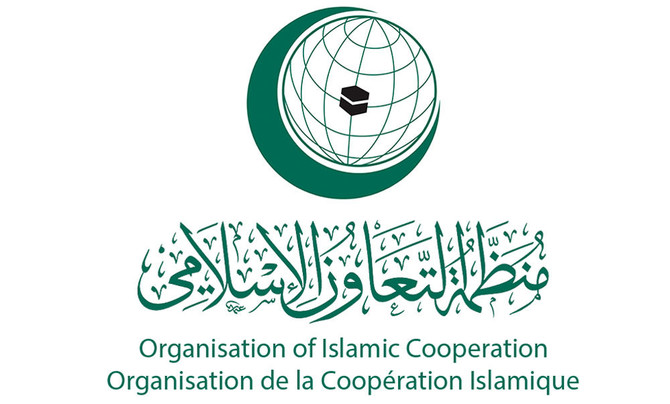
伊斯兰合作组织(阿拉伯语:منظمة التعاون الإسلامي;英语:Organisation of Islamic Cooperation;法语:Organisation de la coopération islamique)原名伊斯兰会议组织,是一个伊斯兰世界的政府间国际组织,为联合国大会观察员;该组织由遍及西亚(中东)、中亚、西非、北非、印度次大陆和东南亚的57个国家组成,覆盖的人口约为16亿。秘书处设在沙特阿拉伯王国的吉达市;现任秘书长是原沙特社会事务大臣Yousef Al-Othaimeen(从2016年开始)。
组织的宗旨是促进各成员国之间在经济、社会、文化和科学等方面的合作;努力消除种族隔离和种族歧视,反对一切形式的殖民主义;支持巴勒斯坦人民恢复民族权利和重返家园的斗争;支持穆斯林保障其尊严、独立和民族权利的斗争。
但要注意的是并非每个成员国是伊斯兰国家,如圭亚那、苏里南、莫桑比克、喀麦隆、乌干达和加蓬等国,伊斯兰反而是极少数人的信仰,阿尔巴尼亚则是唯一加入该组织的欧洲大陆的主权国家和联合国会员国,2011年脱离苏丹独立的南苏丹也在独立后脱离该组织的势力范围。
Die Organisation für Islamische Zusammenarbeit (arabisch منظمة التعاون الإسلامي, DMG Munaẓẓamat at-Taʿāwun al-islāmī; englisch Organization of Islamic Cooperation, OIC; französisch L’Organisation de Coopération Islamique, OCI; früher Organisation der Islamischen Konferenz) ist eine zwischenstaatliche internationale Organisation von derzeit 56 Staaten,[2] in denen der Islam Staatsreligion, Religion der Bevölkerungsmehrheit oder Religion einer nennenswerten Minderheit ist. Die Organisation nimmt für sich in Anspruch, den Islam zu repräsentieren. Mehrere größere Mitgliedsstaaten (Saudi-Arabien, Ägypten, die Türkei und der Iran) erheben hinter den Kulissen Führungsansprüche; die jeweils anderen Staaten bestreiten deren Recht dazu. Infolge dieser Rivalitäten ist die OIC seit 2017 kaum handlungsfähig.[3]
イスラム協力機構(イスラムきょうりょくきこう、アラビア語: منظمة التعاون الاسلامي、略称OIC; 英語: Organisation of Islamic Cooperation、略称OCI; フランス語: Organisation de la coopération Islamique)は、イスラム諸国をメンバーとして構成され、国際連合に対する常任代表を有する国際機構。公用語はアラビア語、英語、フランス語。かつてはイスラム諸国会議機構(منظمة المؤتمر الإسلامي、英語: Organisation of the Islamic Conference、フランス語: Organisation de la Conférence Islamique)という名称であったが、2011年6月にカザフスタンのアスタナでの会議で「イスラム協力機構」への変更と紋章が決定された[1]。
イスラム諸国の政治的協力、連帯を強化すること、イスラム諸国に対する抑圧に反対し、解放運動を支援することを目的とする。
加盟国はムスリム(イスラム教徒)が国民の多数を占める西アジア、北アフリカ、西アフリカ、東アフリカ、中央アジア、南アジア、東南アジアなどの57か国、オブザーバーが5ヵ国・8組織(国連など)からなり、世界13億人のムスリムの大部分を代表する。
加盟条件としては、国内でムスリムが大多数を占めることを必ずしも条件としているわけではなく、南アメリカのいくつかの国のようにマイノリティとしてある程度のムスリム人口を抱えているだけであっても、外相会議における審査で承認されればイスラム諸国のひとつとして機構に加盟することができる。イスラム教徒が多数派を占める国はほとんど参加しているが、イスラム教徒比率の高い国のうちエチオピア(30~50%)とタンザニア(約30%)が加盟していない。イスラム教徒人口の多い国で言えばインド(約1億5000万人)や中国(約2000万人)も加盟していない。逆にイスラム教徒比率の低い国ではガボン、ウガンダ、スリナム、ガイアナなどが加盟している(それぞれ10%未満)。
The Organisation of Islamic Cooperation (OIC; Arabic: منظمة التعاون الإسلامي; French: Organisation de la coopération islamique), formerly the Organisation of the Islamic Conference, is an international organization founded in 1969, consisting of 57 member states, with a collective population of over 1.8 billion as of 2015 with 53 countries being Muslim-majority countries. The organisation states that it is "the collective voice of the Muslim world" and works to "safeguard and protect the interests of the Muslim world in the spirit of promoting international peace and harmony".[1]
The OIC has permanent delegations to the United Nations and the European Union. The official languages of the OIC are Arabic, English, and French.
L’Organisation de la coopération islamique (OCI), en arabe : منظمة التعاون الإسلامي (Munaẓẓamat at-Taʿāwun al-islāmī), en anglais : Organisation of Islamic Cooperation (OIC), appelée jusqu'en 2011 Organisation de la conférence islamique (en arabe : منظمة المؤتمر الإسلامي, en anglais : Organisation of the Islamic Conference), est une organisation intergouvernementale créée le 25 septembre 1969. Son siège se situe à Djeddah en Arabie saoudite et elle possède une délégation permanente aux Nations unies.
Regroupant 57 États membres, sa vocation est de promouvoir la coopération dans les domaines économiques, sociaux, culturels et scientifiques (grâce notamment à la Banque islamique de développement), mais aussi la sauvegarde des lieux saints de l'islam ou encore le soutien au peuple palestinien. À l'échelle mondiale, il n'existe pas d'autre organisation confessionnelle dont les membres signataires soient des États.
Ses trois langues officielles sont l'arabe, l'anglais et le français2.
L'Organizzazione della cooperazione islamica (in arabo: منظمة التعاون الإسلامي, Munaẓẓamat al-taʿāwun al-islāmī; in inglese: Organization of the Islamic Cooperation, OIC; in francese: Organisation de la coopération islamique, OCI) è un'organizzazione internazionale con una delegazione permanente presso le Nazioni Unite. Rappresenta 56 Stati dell'Europa, Vicino Oriente, Medio Oriente, America meridionale, Africa, Asia centrale e del Subcontinente indiano.[1]
L'organizzazione, fondata a Rabat, in Marocco, il 25 settembre 1969 con il nome Organisation of the Islamic Conference, in arabo: منظمة المؤتمر الإسلامي, Munaẓẓamat al-muʾtamar al-islāmī; (FR) Organisation de la conférence islamique, mutato nell'attuale nel 2011.[2]
Ha come finalità la salvaguardia degli interessi e lo sviluppo delle popolazioni musulmane nel mondo.
Il 10 ottobre 1975 le è stato riconosciuto lo status di osservatore dell'Assemblea generale delle Nazioni Unite.
La Organización para la Cooperación Islámica (Árabe:منظمة التعاون الاسلامي); (Francés: Organisation de la Coopération Islamique); (Inglés: Organisation of Islamic Cooperation) es un organismo internacional que agrupa a los estados de confesión musulmana, creado en 1969 durante la Conferencia de Rabat y formalizada dos años después.
Su sede está en Yidda, ciudad costera de Arabia Saudí a orillas del Mar Rojo. Sus miembros son países con mayoría de población musulmana o con una comunidad significativa en ellos, con Estados miembros y observadores de África, Asia, Europa y América del Sur. El 28 de junio de 2011 se oficializó el cambio de nombre,1 anteriormente se llamó: Organización de la Conferencia Islámica (Árabe:منظمة المؤتمر الإسلامي); (Francés: Organisation de la Conférence Islamique); (Inglés:Organization of the Islamic Conference).
Sus acciones se circunscriben a la actividad colaborativa entre sus miembros, sobre todo en la lucha contra el imperialismo, el neocolonialismo y por la emancipación de Palestina. Históricamente se celebraron diversos congresos que contribuyeron con su desarrollo: Lahore (1974), La Meca (1981), Casablanca (1984), Kuwait (1987), Dakar (1991). Sus repercusiones son menores que las de la Liga Árabe.
Организация исламского сотрудничества (англ. Organisation of Islamic Cooperation (OIC), араб. منظمة التعاون الاسلامي) — международная организация исламских стран (до 2011 года называлась Организация Исламская конференция (ОИК).
 运输和交通
运输和交通
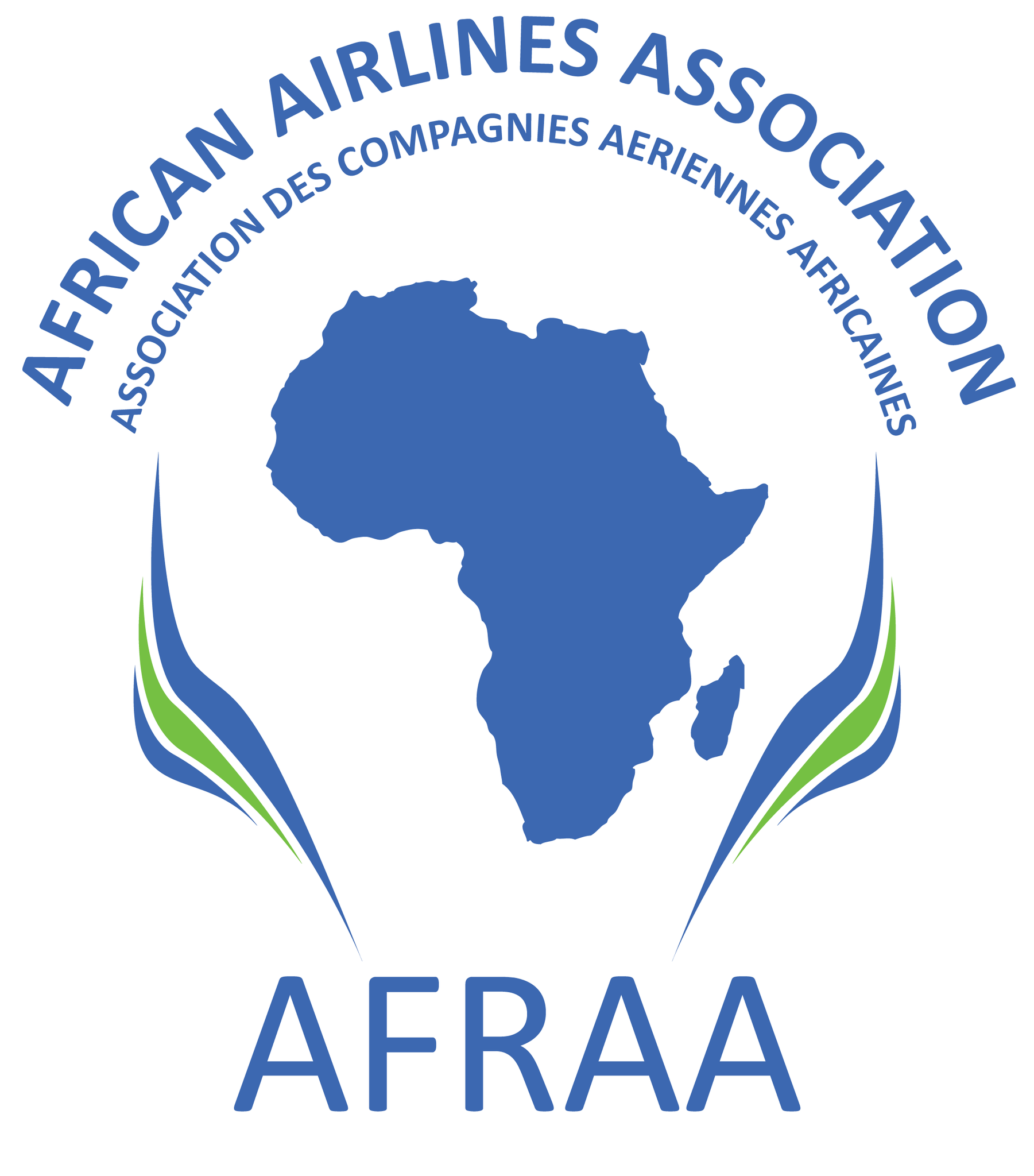
 国际城市
国际城市
 重要港口
重要港口

 体育
体育
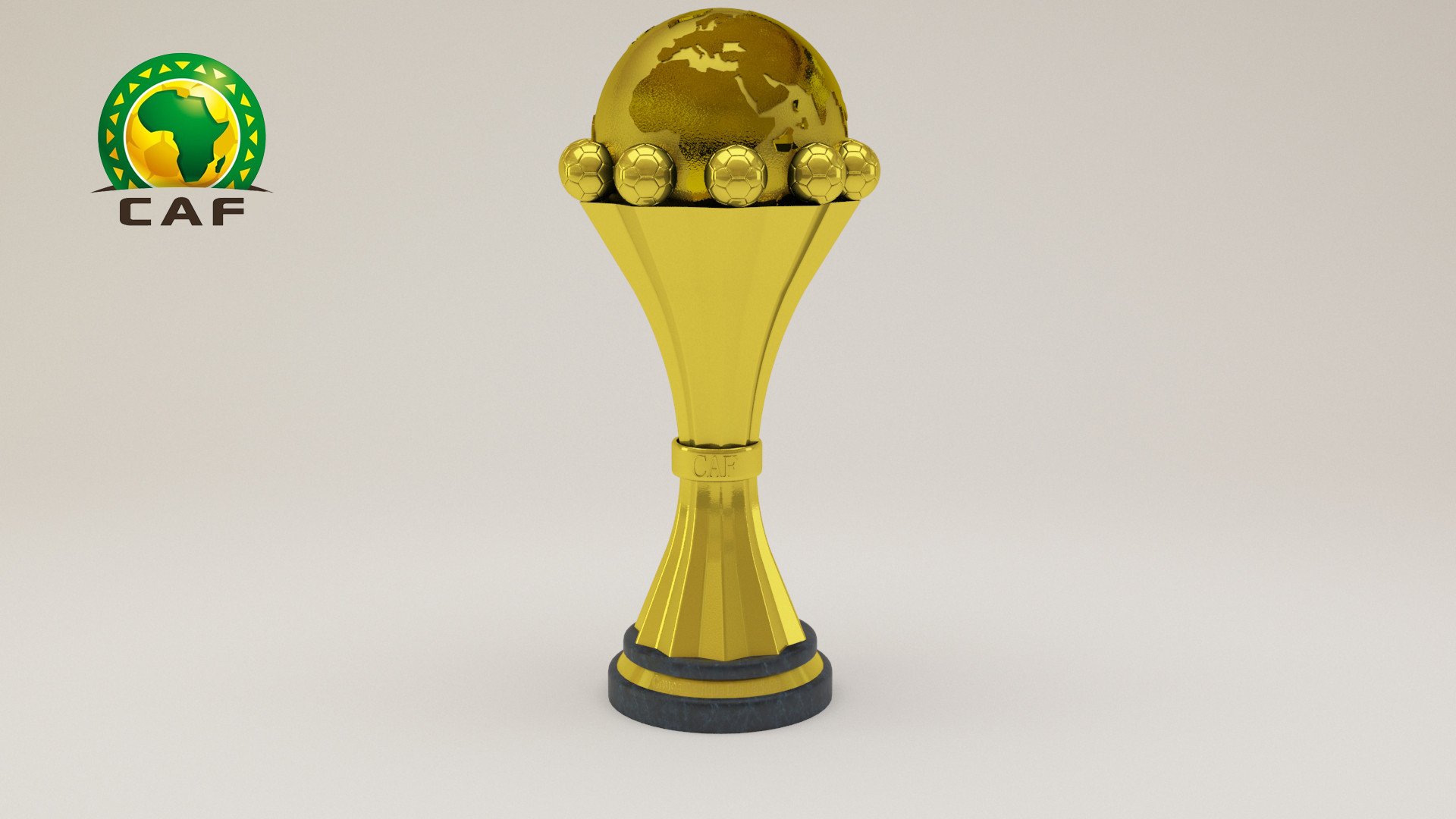

 能源
能源
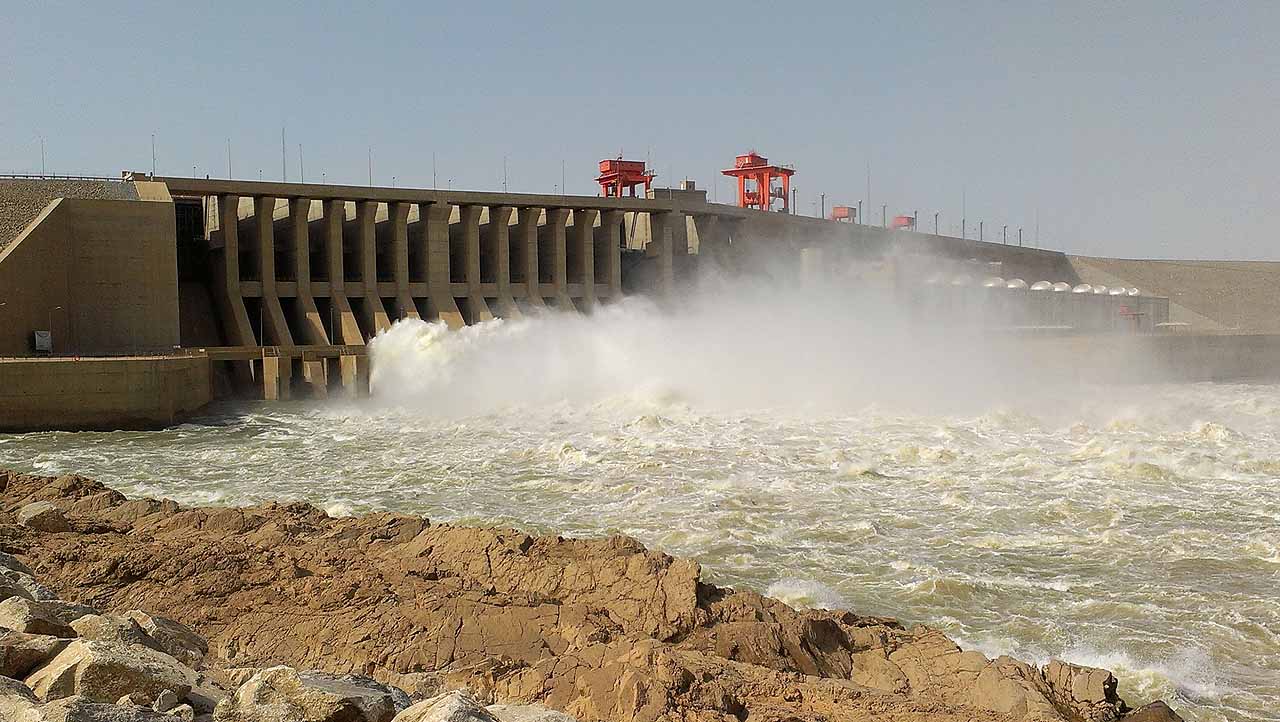
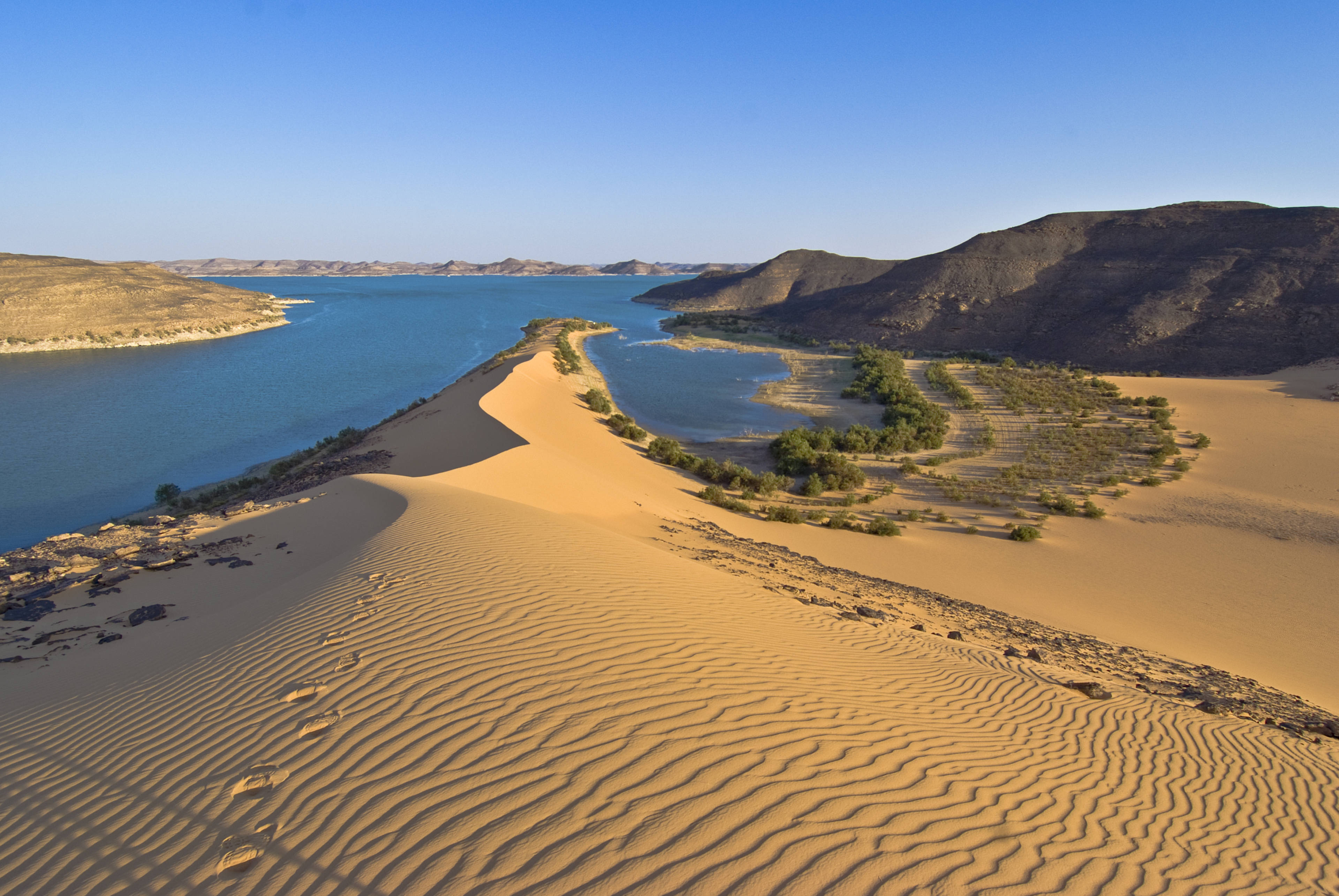
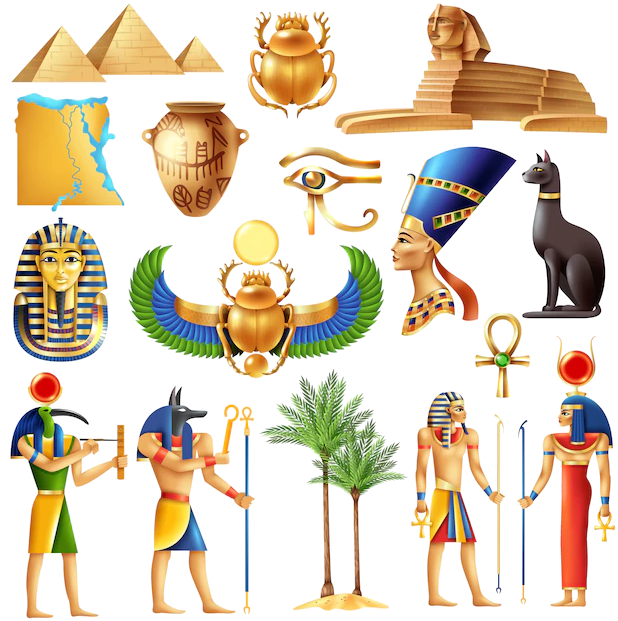 古埃及
古埃及